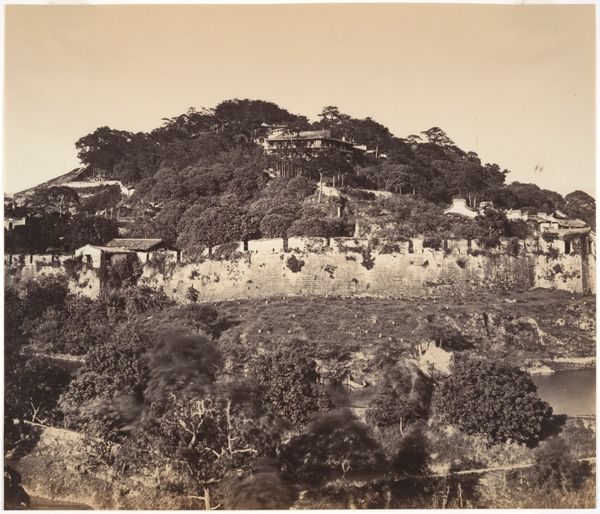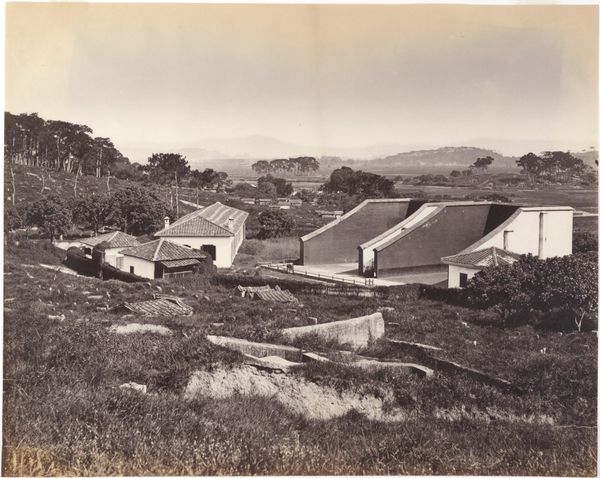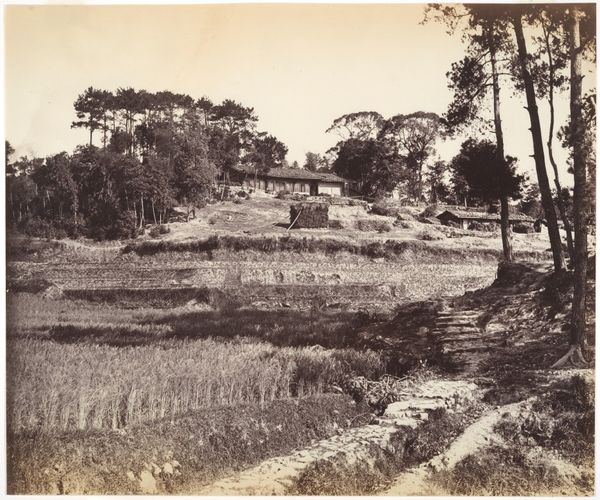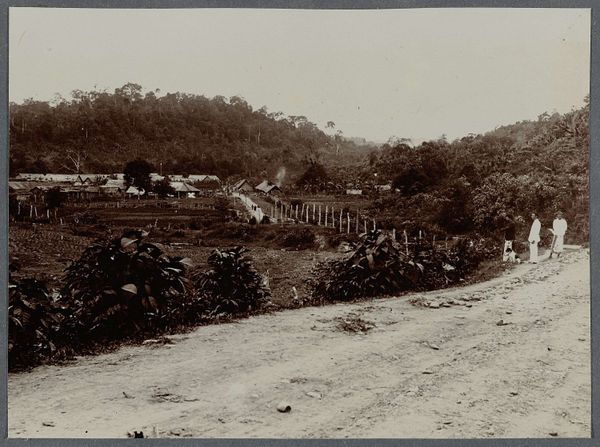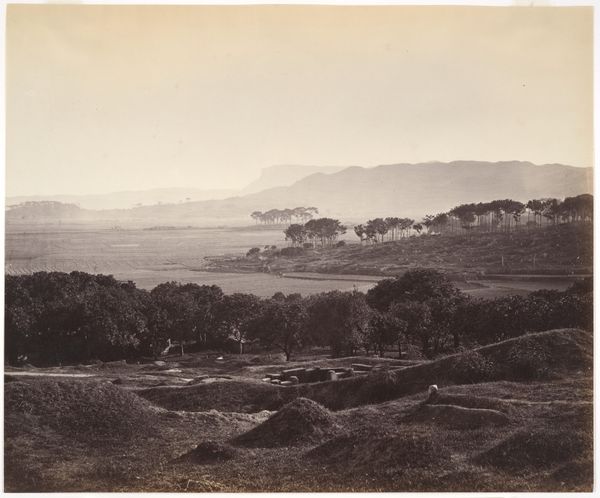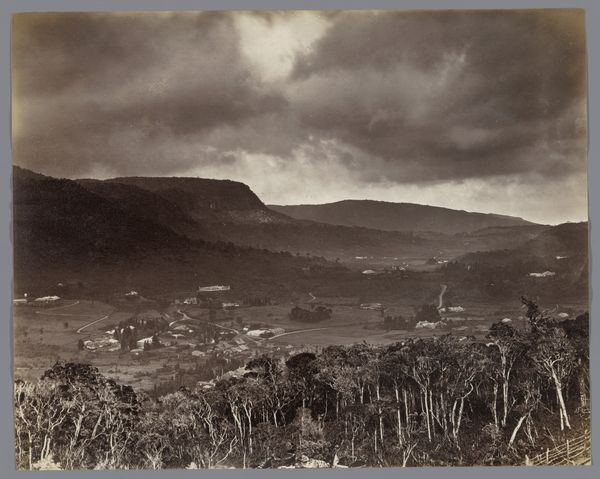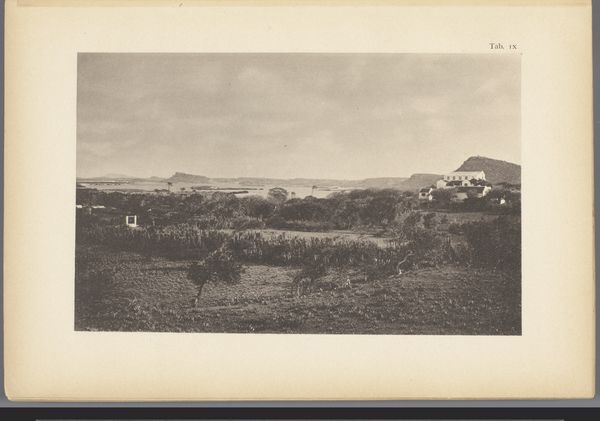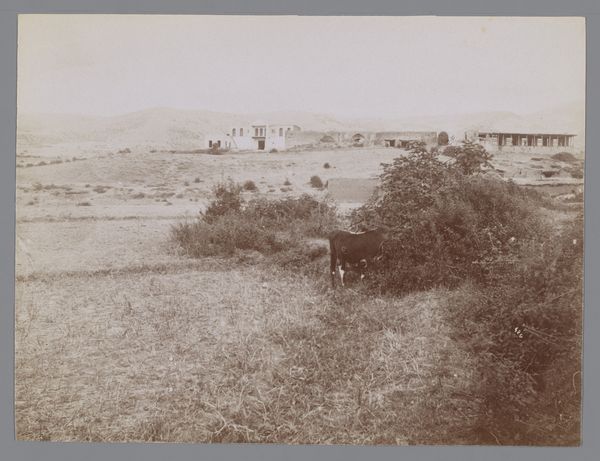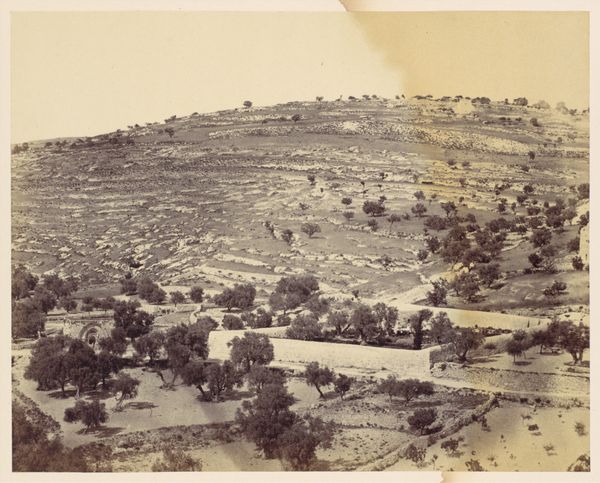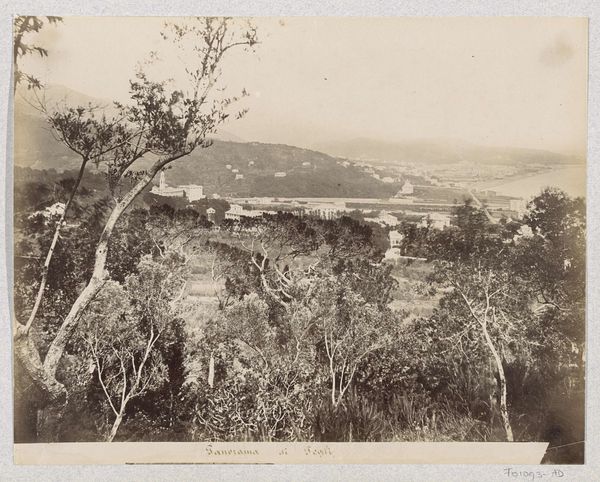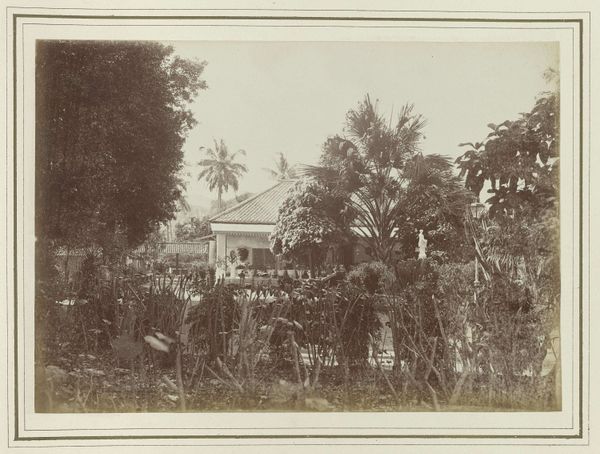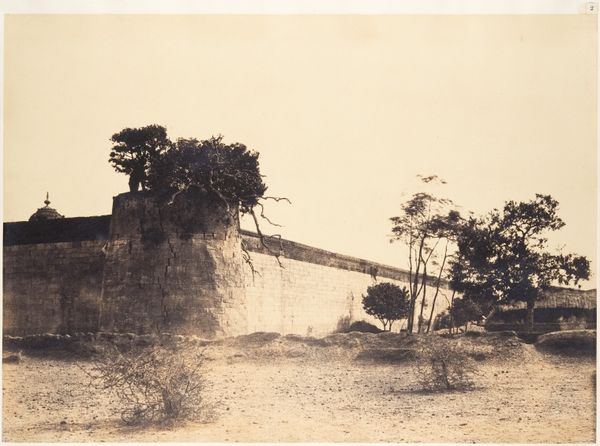
photography, albumen-print
#
landscape
#
photography
#
orientalism
#
albumen-print
#
building
Dimensions: Image: 8 9/16 × 11 7/16 in. (21.8 × 29 cm)
Copyright: Public Domain
Curator: Let’s delve into this albumen print from 1869, a landscape captured by John Thomson titled "Bowling Alley and Raquet Court at Foochow," currently housed at the Metropolitan Museum of Art. What are your first thoughts? Editor: Immediately, I see a picture of serenity. There's a hushed quality, a stillness to the landscape despite the human constructions present. The light is soft, contributing to a dreamlike quality, which softens any harsh realities of the context. Curator: Thomson's albumen process here speaks to a larger story of photographic technique in the 19th century, reflecting both scientific innovation and the burgeoning appetite for visual documentation and colonial reporting. Each print represents considerable labor, from preparing the glass plate negatives to the careful coating and development using albumen from eggs. Editor: Indeed. And if we consider these "Bowling Alley" and "Raquet Court," they appear to be places for gathering, potentially sites of cultural exchange. Bowling, perhaps introduced by Westerners. The photograph creates a narrative, blending of cultures and possibly imperial influence represented through these leisure facilities. It invites us to reflect on the symbols that indicate cultural interplay during the period. Curator: Exactly. Furthermore, the materials themselves carried an economic weight. The consumption of resources to create such images points toward how art and photographic practices were entwined with both material culture and class hierarchies. Consider who had the resources to both produce and collect these images, in comparison to those who actually used the buildings. Editor: It is true; the image makes the foreign familiarity the central element by way of what may have felt common and comforting for the colonizers: the racquetball court. This visual prioritization almost seems to "domesticate" the foreign landscape into a new feeling of ease, even "belonging." The very human craving to turn the "unknown" to "known". Curator: Looking closely at how albumen prints, with their delicate tonalities, facilitated the rise of photography and shaped a unique colonial narrative that was materially sustained. Hopefully people now understand this relationship by engaging with it and talking about the images found in such institutions. Editor: Absolutely. The layered narrative within this image, considering both visible leisure symbolism and underlying cultural contexts, brings it from a colonial gaze into a conversation that helps promote greater cultural awareness of how visual markers operate through historical artifacts.
Comments
No comments
Be the first to comment and join the conversation on the ultimate creative platform.
